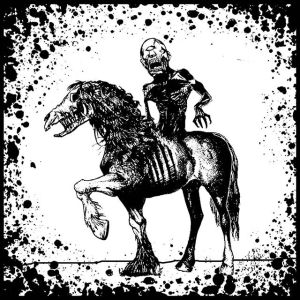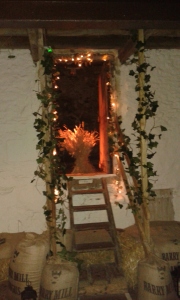This week saw the start of a series of creative community workshops I’ve agreed to run as part of my Creative Scotland award for my non-fiction book Grist! The Life, Lore and Landscape of the Scottish Watermill.

The book is now complete and with its publisher, Little Toller Books. As I await the copy edits, it seems like the perfect time to reflect on the process of gathering all that information, and what I hope to achieve with these community sessions.
Here is a blurb which, I hope, will find its way onto the jacket of the finished book, because I think it says quite a lot about the problematical nature of keeping our storytelling heritage alive:
‘Inherited narratives about our landscape and rural traditions are a lot like Granny’s best china; valued in a certain nostalgic fashion, but in danger of being cast aside by the modern impetus to de-clutter. People do not always see their own stories as part of our wider cultural heritage, and yet they are key to our understanding of ourselves. Stories are heirlooms. They deserve to be dusted off and given the chance to shine.’
Grist! The Life, Lore and Landscape of the Scottish Watermill (Little Toller Books)
 People do not tend to value their own stories They discount them, failing to regard their anecdotes as ‘history’ or even ‘folklore in the making.’ The older generation may find it difficult to share personal experiences or view it as self-indulgent or boastful. We need look no further than the recent D-Day commemorations to see how modest and humble our heroic veterans are. A cry I frequently hear from children and grandchildren is, “I wish we’d recorded the stories while they were still here.’ There is always a measure of regret when stories are lost, so the first of my sessions was entitled, ‘How to be a story keeper.’
People do not tend to value their own stories They discount them, failing to regard their anecdotes as ‘history’ or even ‘folklore in the making.’ The older generation may find it difficult to share personal experiences or view it as self-indulgent or boastful. We need look no further than the recent D-Day commemorations to see how modest and humble our heroic veterans are. A cry I frequently hear from children and grandchildren is, “I wish we’d recorded the stories while they were still here.’ There is always a measure of regret when stories are lost, so the first of my sessions was entitled, ‘How to be a story keeper.’
My intrepid participants were a mixture of writers, poets, musicians and artists, hoping to find inspiration for their own work from the stories of the past.One of their first tasks was to write down their favourite story from childhood. Almost all of the resulting tales had been passed down orally from a parent (usually mum, or a grandparent), and spiced up with a liberal helping of imagination. We discussed how stories change from telling to telling, which is a perfect illustration of how our own folkloric tradition has evolved.
 From our own fondly-remembered stories of the recent past, we moved on to some characters from the mists of time. The Nuckelavee (from Orcadian knoggelvi, meaning “Devil of the Sea”) was a creature of abject terror and spoken of with bated breath until comparatively recent times. Although many creatures of folklore tend to have a dualistic nature, benign unless provoked, the Nuckelavee was sheer evil, a proactive demonic force. (thanks to Orkney.jar for info)
From our own fondly-remembered stories of the recent past, we moved on to some characters from the mists of time. The Nuckelavee (from Orcadian knoggelvi, meaning “Devil of the Sea”) was a creature of abject terror and spoken of with bated breath until comparatively recent times. Although many creatures of folklore tend to have a dualistic nature, benign unless provoked, the Nuckelavee was sheer evil, a proactive demonic force. (thanks to Orkney.jar for info)
Given the strong Viking influence in Orkney the creature appears to be a fusion of the water horse or Kelpie from Celtic mythology and something from a dark Norse legend. The related nökk or nykk was a Scandinavian water-spirit often associated with mills. The creature had the ability to stop the waterwheel, but upon investigation, the miller might find only a beautiful saddled pony. Woe betide him if he tried to mount the steed. The nökk would take off at full gallop until it reached the sea, submerging them both in a flash of flame. For generations, island mothers would threaten their children with the words, ‘The Noggle will get you!’
We also looked at the ‘Mither of the Sea’ narrative, also from Orkney, which describes the age-old seasonal battle between the benign mother-personification of summer and the spine-chilling Teran, god of winter. We reflected on the powerlessness of those coast-dwellers, risking their lives in the fishing grounds and trying to make sense of the squalls and swells which claimed the lives of their husbands, fathers and brothers.
 From themes of light and dark, we moved into the realm of eternal life, with corn dollies and harvest lore. The personification of the grain goddess and the cycle of life played out in the turning seasons is a powerful narrative found throughout most cultures.I love the story of the ‘clyack sheaf’, the last sheaf of the harvest, which Scottish farmers often fed to their pregnant livestock to ensure good health and vitality over the lean winter months.
From themes of light and dark, we moved into the realm of eternal life, with corn dollies and harvest lore. The personification of the grain goddess and the cycle of life played out in the turning seasons is a powerful narrative found throughout most cultures.I love the story of the ‘clyack sheaf’, the last sheaf of the harvest, which Scottish farmers often fed to their pregnant livestock to ensure good health and vitality over the lean winter months.
Fascinating stuff, and I can’t wait until next week when we’ll be taking a peek into the woods! In the meantime, be a story keeper this week. Write down the stories you remember from your childhood and keep them safe.
